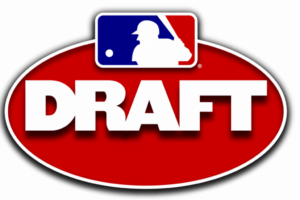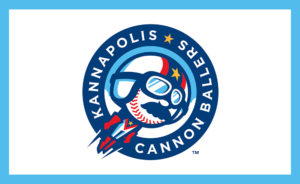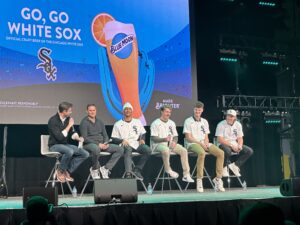Catching 2015 – The Coming Battle
You can look at any position in the organization and attempt to determine who will be on the roster in that role in 2015. And given the apparent path taken by Hahn and Company starting late last year, which seemed to plot a road through .500 baseball this year with the goal of competing the next, it is enticing to break out the crystal ball. For most positions, there are just too many wildcards this early to make even educated guesses. But with a lack of likely free agent options, relatively weak players in the majors and a few interesting prospects in the minors, the catching position stands out as one that can be more readily analyzed in a vacuum.
Let’s assume for the moment that the White Sox won’t be acquiring a catcher on the free agent market this coming offseason. Given that the apparent 2015 market is highlighted by names like John Buck, AJ Pierzynski and Ryan Doumit, this seems pretty likely. Few teams are willing to trade away major league catching talent either, with it being as rare as it is.
So let’s look at the case for each the five catchers currently within the White Sox organization who have any real shot at being major-league ready for next season.
THE CASE FOR TYLER FLOWERS
Acquired as the main return from Atlanta in the Javy Vazquez trade back in late 2008, Tyler Flowers was expected to take his prolific hitting and add in some defensive refinement to be the Sox’ catcher of the future. After struggling on an off in the upper minors and as a backup in Chicago, he finally got his shot to start in 2013, and was virtually the opposite of his early billing. The heir apparent to AJ Pierzynski could only muster a .603 OPS, struck out 34.2% of the time, and was essentially replaced as a starter by Josh Phegley late in the season. On the flip side, the pitching staff raved about his work with them, and his defense was better than what AJ had previously provided (though that isn’t saying a lot).
With the White Sox failing to land a big fish in the offseason, Flowers went into this season as the starter by default. The Sox were rewarded with the appearance of Tyler McSingles, who until recently was somehow hitting over .300 and has already nearly matched his hit total from last year in slightly over half the number of games. BABIP has been fairly screaming that this start is an extreme and unsustainable outlier (an astonishing .560 in April, now .456 on the season), and sure enough his numbers have started coming back down to earth (.221 AVG, .656 OPS in May). He has increased his walk rate (7.9%, vs 5.1% last year), but the K rate is virtually identical and still scary (34.8% vs 34.2% last year). His defense has turned into major league average though, and the pitching staff continues to sing his praises, both key aspects for the role.
Flowers is now arbitration-eligible (paid just under a million this year), with two more “arb years” remaining after this one. He’ll likely cost north of a million a year each of those two years prior to free agency, and any increase in performance would raise those numbers. The pro case for Flowers includes that relatively low cost (compared to proven major leaguers), good rapport with the pitching staff, passable defense and far more major league experience than his competitors. The con case is that his offense has only been good during an unsustainably lucky single month, his defense is likely capped at average, and he’ll cost more than the alternatives next year (though likely by a million or so).
THE CASE FOR ADRIAN NIETO
In possibly the biggest head-scratcher of the Hahn era, the White Sox selected Adrian Nieto from the Washington Nationals in the Rule V draft this past offseason. For those unfamiliar, players taken in the major league portion of the Rule V are selected for $50,000 (paid to the original team), and must be kept on the 25-man active roster (or disabled list under restrictions) the entire following season. If they are not, then that player must be offered back to the original team for $25,000, which Washington would almost assuredly accept in this case. So after showing some flashes of talent in Spring Training, and in part because of Josh Phegley’s issues in camp (more on that later), the Sox decided to stash Nieto as Flowers’ rarely-playing backup in Chicago.
Why was this such a head-scratcher? Because Adrian Nieto had never played above Advanced A ball, and wasn’t even considered a Top 20 prospect in the Nationals’ system. The only catcher who went from any level of A-Ball straight to the majors and stuck was Butch Wynegar in 1976 (and Wynegar’s numbers in the minors dwarfed anything Nieto has ever done). This switch-hitter posted a very solid .285/.373/.449 line in 2013 at High A Potomac with solid power (11 HR), a good walk rate (11.7% BB/PA), but a mediocre contact rate (18.1% K/PA) from a 23 year old in his 6th minor league season. It should be noted that, much like Phegley, Nieto missed some time during his minor league seasons due to injury (as well as a PED suspension). Defensively he’s been said to have the tools to be above average, but his CS% and PB rates in the minors weren’t all that great. You can analyze that in more detail in this piece we did comparing Nieto and Smith during the offseason.
It seems fairly obvious the Sox were desperate for catching talent, with Flowers and Phegley posting pretty awful numbers in Chicago in 2013 and Kevan Smith the only minor leaguer worth mentioning (and he, like Nieto, was still in A ball). Add that to the fact that Robin Ventura tends to keep backups away from the field as much as possible, and here we are about two months in with Nieto having only 41 plate appearances. So far he’s posted a nice-looking .308 AVG, but that’s based on a Flowers-like unsustainable .462 BABIP, and he’s drawn just one walk against 13 strikeouts. Defensively he seems to be holding his own, but with so little game time to work with, it’s hard to draw much of a judgment. It should go without saying that while this major league exposure should teach Adrian a few things, it is doing him no favors to his overall development sitting on the bench day in and day out.
The pro case for Nieto is that he’s a switch-hitter who had shown flashes of solid hit and power tools and the ability to draw walks in the minors, he’s gotten to know the major league coaches and pitchers and their styles, and is said to have some intriguing defensive tools. The case against him is his lack of any useful amount of playing time above A ball, a history of striking out where he has played, and stunted development time. He’ll be pre-arbitration for two more years (so he’ll cost around $500k/season), and then still has three arbitration years remaining after that, so he’s a cheaper gamble than Flowers. And after the season is over, the Sox can option him back to the minors if they so choose.
THE CASE FOR JOSH PHEGLEY
Telling the story of Josh Phegley’s development could take up volumes, but we’ll be brief here. Drafted in the supplemental 1st round in 2009 (38th overall) as an offense-first catcher, Phegley went straight to A-Ball and struggled a bit (.224/.277/.408, 18.7% K/PA) but held his own and showed some power (9 HR in 214 PA). After that it gets complicated, as Phegley dealt with a potentially dangerous health condition (Idiopathic Thrombocitic Purpura) and then a wrist injury, and was shoved up the ladder anyway with only small doses of development time along the way. 2012 was his first truly healthy full season and he found himself at AAA with only about 800 PA in pro ball prior to that point. In 2013 he finally turned the corner, posting big numbers in Charlotte (.316/.368/.597, 15 HR in 258 PA), and seeding word of improved defensive abilities.
Late in 2013, Phegley was sent to Chicago and took the bulk of the playing time from Flowers. Arriving with a bang (3 HR in 1st 5 games) and inciting Phegley Fever, his star fizzled pretty quickly as he finished with a .206/.223/.299 slash line in 65 games and struggled mightily on the defensive side. Going into Spring Training this season, Phegley was seen as having an even shot at getting the starting job. But he was sent to minor league camp fairly early, ostensibly due to Nieto’s presence and lackluster performance. Hints found in quotes from the Sox front office and coaching staff, as well as words from Phegley himself, suggested Josh wasn’t taking his role with the pitchers seriously enough nor focusing enough on his defensive woes.
Down in Charlotte again, Phegley has been hitting well (.267/.342/.497, 15.8% K/PA, 6 HR in 184 PA), and is drawing walks at the highest rate he’s shown in years (8.2%). He continues to throw out baserunners at a very solid rate (44%), but he has 7 passed balls in less than two months of play. In addition to defense, the other key piece of data we are missing is how well he is doing working with the pitching staff.
The case for Phegley is the strong hit and power tools he’s exhibited when he’s had a chance to adjust to level in the minors, and his strong throwing arm. The case against him is primarily about his defense and pitcher handling, though his historical lack of walks could be a concern. Phegley has options remaining, and he’ll have another two or three years of pre-arb time before becoming arbitration-eligible, so he’ll be inexpensive.
THE CASE FOR KEVAN SMITH
Kevan Smith was a quarterback at Pitt, and baseball was secondary for him until late in his college career. As a result, he was raw when drafted at the catching position, so the Sox made the smart decision to move him through the system slowly. That means Smith is at AA about to turn 26 years old, which even for a catcher is about a year behind the target age curve. That lack of background with catching and age-level disparity are the bad news. The good news is, he’s hit well at each level on his way up the system, and our talks with him made it clear he’s spent considerable time focusing on pitcher-handling.
Smith made short work of both rookie affiliates in his 2011 draft year (1.073 OPS, 9 HR, nearly identical K and BB rates in 239 PA) during his age 22/23 season, which is what you would expect him to do. 2012 saw his overall OPS drop to .772 with much less appealing plate discipline numbers, but he got stronger as that year went on and fared better at A+ than A-ball that year. In 2013 he repeated Winston-Salem and saw his offensive results improve across the board, but he was 24/25 in Advanced A ball. This season his hitting has taken yet another step, and at this point he’s posting a very solid .316/.393/.474 line in AA, with a reasonable contact rate (15.0% K/PA). Since the beginning of last month he’s been on fire at the plate, garnering our Hitter of the Month award for May for posting a 1.052 OPS and more walks than strikeouts.
Being a former quarterback at a significant DI program, it should be no surprise that Smith is a very good athlete with a strong arm. His CS rates are comparable to or slightly better than Adrian Nieto had done at similar levels, and his PB rates were better as well, so he appears to be faring relatively well defensively. The pitcher-handling is more nuanced, and there isn’t a lot of information out there available on this aspect. He’s also blocked from going to AAA Charlotte by the presence of Josh Phegley. But his bat has been improving each year and he’s now forced himself onto the radar for 2015 consideration.
The case in favor of Smith is that he’s done nothing but hit, hit for power and get on base, at increasingly effective rates, all the way up the system. His athleticism and arm strength also lend credence to the idea that his defense should get there. The case against Smith is simply that, at this point, he’s about to turn 26 and has only seen 2 months at AA. The wildcard is the pitcher handling, and that’s something we just don’t know much about. Smith is of course still fully stocked with minor league options and, like anyone with no MLB service time, he’d be cheap for at least three seasons. In order to really be on the radar for a 2015 job, he’ll need to spend some time in AAA this year, and that could be a tough maneuver to pull off.
THE CASE FOR MIGUEL GONZALEZ
Gonzalez is not going to contend for the starting role in Chicago in 2015, but he’s mentioned here because he does have an outside shot at the backup role. In fact he played precisely that role in Chicago briefly in 2013, going 2-for-9 at the plate and playing in 5 games.
Gonzalez has been in the system since 2008 at age 17 in the DSL, and made his state-side debut in 2009 with Bristol. His offensive numbers there were very strong (.888 OPS in 173 PA), but since then he just hasn’t put together any kind of track record at the plate. His career OPS numbers are .578 in A, .624 in A+, .645 in AA and .608 in AAA. In fact he wasn’t even getting starting playing time in the minors at any point consistently since 2011.
What this 7-year minor leaguer does bring to the table is very good defense in every aspect of the catching game, which makes him a potentially ideal backup catcher. But at the major league level, even if the 23-year old really is the above average defender he’s billed to be, he needs to hit a little bit to stick around. Recently promoted to AAA to back up Phegley, he’ll need to show some potential with the bat to have a shot in 2015.







